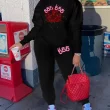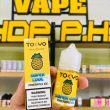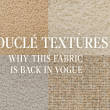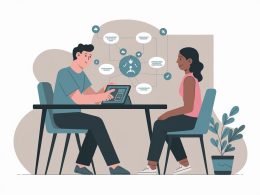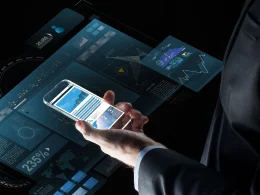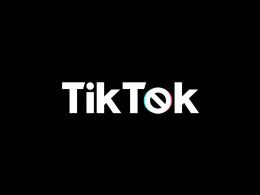Introduction
Ten years ago, telling a computer “paint me a neon dragon surfing on Saturn’s rings” would earn blank stares. In 2025, you type that phrase into a prompt box and watch color swirl into a finished poster in seconds. Artificial-intelligence art engines—once quirky lab toys—now sit on millions of laptops, shaping album covers, fashion prints, and even entire movie storyboards. Some artists cheer the freedom to prototype faster; others worry about job security and intellectual-property chaos. Whatever your stance, AI-generated art has already redefined what it means to be creative. This article unpacks the tech behind the magic, the industries transformed, the ethical storms brewing, and practical tips for blending silicon brushstrokes with human vision.
What is AI-Generated Art?
AI-generated art refers to images, videos, or other media created with the help of artificial intelligence. Unlike traditional art, where every stroke comes from human hands, AI art uses algorithms to produce content. These algorithms learn patterns from vast libraries of existing works. Then they generate new pieces that blend styles, shapes, and colors in novel ways. Over the past decade, AI art has moved from lab experiments to consumer tools. Today, anyone with a browser can prompt an AI model to create a design or illustration in seconds. This shift has redefined the creative process and expanded who can call themselves an artist.
How AI-Generated Art Works
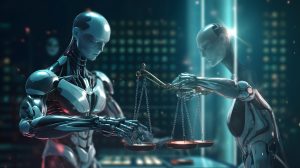
Creating AI-generated art relies on advanced models that learn from data. Two main approaches power these tools: neural networks and rule-based systems.
Neural Networks and Algorithms
Neural networks mimic the human brain in how they process information. They consist of layers of connected nodes that transform input data step by step. In art generation, models like Generative Adversarial Networks (GANs) or diffusion models train on millions of images. A GAN pairs two networks: one generates images, while the other judges them. Through many rounds, the generator improves until it produces realistic art. Diffusion models take a different path. They start with random noise and gradually refine details until a clear image emerges. Both methods can create designs that range from photorealistic to abstract.
AI Art Tools and Platforms
Several popular platforms let users harness these models. Midjourney and Stable Diffusion offer web-based interfaces and Discord bots. Users type simple text prompts, and the AI returns images in moments. DALL·E 3, by OpenAI, can generate detailed scenes with precise composition. Some tools allow style mixes, where you reference multiple artists or art movements. Others support image-to-image generation, turning a sketch into a polished painting. Mobile apps like Dream by Wombo bring AI art to your smartphone. They all share one goal: make complex algorithms easy to use for non-technical creators.
Benefits of AI-Generated Art in 2025
AI-generated art offers clear perks for artists and businesses alike.
Accessibility and Democratization
In the past, creating high-level digital art required expensive software and steep learning curves. Today, AI art tools lower barriers. A student or hobbyist can produce stunning images without formal training. This democratization broadens who can share visual stories and sparks a wave of new talent.
Speed and Efficiency
Traditional illustration or 3D modeling can take hours or days. AI-generated art can cut that time to minutes or even seconds. Designers use AI to draft concepts, explore color schemes, or fill backgrounds. They then refine AI outputs with manual touches. This blend of speed and human polish boosts productivity and creativity.
New Creative Possibilities
AI can suggest combinations humans might not imagine. It can mix futuristic cityscapes with Renaissance lighting, or blend animal shapes with abstract patterns. These fresh ideas inspire artists to push boundaries. AI also powers interactive art, where viewers change images in real time through text or gestures.
Impact on Traditional Artists
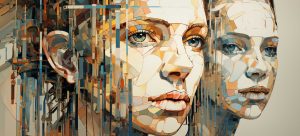
As AI reshapes creativity, traditional artists face both opportunities and concerns.
Collaborative Creation
Rather than replace human artists, AI often acts as a collaborator. Artists use AI to explore hundreds of variations of a theme. They pick the best elements and merge them into a final piece. This partnership speeds iteration and sparks new directions.
Job Market Shifts
Some illustrators worry AI will reduce demand for entry-level work like simple backgrounds or social media graphics. Yet new roles are emerging, such as AI art curators, prompt engineers, and model trainers. Artists who adapt can find niches in guiding AI tools and shaping their outputs.
The Tech Leap: Why 2025 Feels So Different
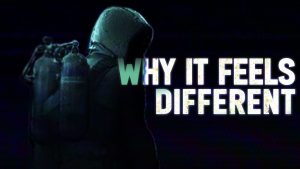
Diffusion Models Take Center Stage
Early GANs (generative adversarial networks) made impressive but glitchy images. Diffusion models—popularized by Stable Diffusion and improved by open-source forks—flip the script. They gradually “denoise” random pixels until an image matches the text prompt, yielding sharper edges and fewer surreal artifacts. Through 2024, model sizes ballooned past 10 billion parameters, but clever fine-tuning means creators can now run mini-versions on MacBooks without fancy GPUs.
Text-to-Video Goes Mainstream
Start-ups such as Pika and Magnific dropped beta tools that animate still prompts into four-second clips. In 2025, their second-generation releases extend footage to 30 seconds at 24 fps while retaining coherence—opening doors for indie filmmakers to build concept trailers overnight.
Real-Time Generation in Design Apps
Adobe’s Firefly now works inside Photoshop and Illustrator; Figma plug-ins like Ando and Galileo generate vector icons on the fly. Designers swap rough sketches for quick prompt iterations, then tweak layers manually. The result: ideation cycles shrink from hours to minutes.
Where AI Art Is Already Changing the Game
| Sector | Pre-AI Bottleneck | 2025 AI Advantage | Example Use Case |
|---|---|---|---|
| Publishing | Costly cover commissions | Instant concept drafts | Indie author generates three cover styles, hires illustrator to refine favorite |
| Game development | 2D asset backlog | Batch sprite creation | Studio spawns 500 NPC outfit variants overnight |
| Marketing | Stock-photo fees | Brand-consistent images | Startup prompts product photos with exact brand palette |
| Fashion | Textile pattern R&D | Endless print ideas | Designer fine-tunes model on archival florals to output fresh repeats |
| Film pre-vis | Expensive storyboards | Quick animatics | Director produces AI animatic to pitch funding |
Creativity Redefined: From Blank Page to Curator-in-Chief
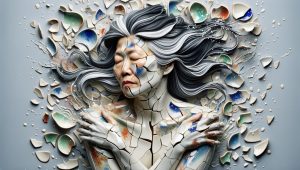
Ideation Accelerators
Artists describe AI as a “mood-board cannon.” Instead of scrolling Pinterest for reference, they prompt models with eclectic mash-ups—“Art Nouveau koi fish in cyberpunk rain”—then splice elements into new sketches. Volume breeds serendipity; the human still chooses and refines.
New Hybrid Roles
2025 job boards list titles like “Prompt Engineer,” “AI Texture Lead,” and “Generative Content Curator.” These specialists translate brand guidelines into prompt languages, maintain model safety filters, and ensure outputs respect culture and audience.
Democratizing High-End Visuals
Teen musicians create festival-ready visuals for zero budget. Non-profits craft fundraising posters in Swahili or Tagalog without hiring multilingual designers. The entry barrier to polished graphics continues to fall, amplifying under-resourced voices.
Ethical and Legal Quagmires
Copyright Tug-of-War
Courts worldwide wrestle with whether scraped training data constitutes fair use. In early 2025, a U.S. district court ruled that individual AI outputs can breach copyright if they closely mimic a protected image, but broad model training itself remains gray. Europe leans toward opt-out databases—artists register work to block training use.
Deepfake Danger
Face-swap quality skyrocketed alongside art models. Social media platforms now auto-watermark AI imagery and verify origin with cryptographic hashes. Users who post unmarked synthetic pics face takedowns or account strikes.
Labor Shifts, Not Total Replacements
Surveys from the International Council of Design show 68 % of agencies integrate AI tools, yet overall hiring fell only 4 %. Routine production art shrinks, but demand for concept direction, brand strategy, and ethical oversight rises.
Advanced Hacks for Artists and Hobbyists
1. Build a Personal Style LoRA
Low-Rank Adaptation fine-tunes a big model on 20-50 pieces of your art. Result: prompts that return images in your signature palette and brushstroke, preserving creative identity.
2. Layer AI Engines
Generate a base scene in Stable Diffusion, upscale in Magnific for details, then color-grade with Adobe Firefly. Each tool excels at different tasks—stacking multiplies quality.
3. Prompt with Negative Keywords
Add “—no watermark, blurry, distorted text” to remove common glitches. Saves time patching in post.
4. Controlled Random Seeds
Save seed numbers when you like a composition. Tweaking other parameters while locking the seed allows consistent series—handy for comic panels or product lines.
5. AI + 3-D Mash-up
Feed Blender viewport screenshots into image models to texture and light scenes, then project back onto the mesh. Fast path to stylized renders without manual UV painting.
Case Study: Indie Game “Night-Market Nomads”
Team size: 4 people
Budget: $25 k
Timeline: 9 months
Workflow
- Designer fine-tunes model on East-Asian neon signage photos.
- Generates 800 storefront backgrounds in two days.
- AI voices provide placeholder dialogue; human actors re-record final script.
- Marketing reels use text-to-video to pre-visualize levels, luring Kickstarter backers.
Outcome
Game hits Steam’s top 20 indie charts, primarily praised for “rich, cohesive art style” delivered on a shoestring budget made feasible by AI.
Balancing Authenticity and Automation
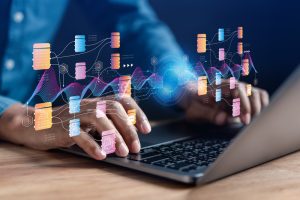
Set Clear Boundaries
Decide early which project stages welcome AI: ideation, color-washing, or final polish. Communicate tool use transparently to clients and audiences.
Keep a Human Signature
Hand-drawn textures, bespoke typography, or subtle imperfections remind viewers of the maker behind the pixels.
Continuous Learning
Models evolve monthly. Schedule quarterly skill sprints to test updates, ensuring workflows stay fresh and competitive.
Future Gazing: What’s Next Beyond 2025?
- Multi-modal Co-Creation: Voice, gesture, and text blend. You describe a scene while sketching shapes; AI refines in real time.
- Edge-Device Generation: On-phone chips run compact models offline, safeguarding privacy and lowering cloud costs.
- Regulated Training Markets: Artists license work through blockchain smart contracts earning royalties per model call, turning data into passive income.
Conclusion
AI-generated art no longer sits on tech conference stages—it lives in everyday creative pipelines, slashing concept time, spawning new job roles, and challenging legal frameworks. Embracing these tools means shifting from solitary maker to curator, art director, and ethics steward, guiding algorithms toward meaningful expression. Begin small: test a diffusion model, fine-tune with your style, and weave outputs into your next poster or pitch deck. The brush has changed, but the spark of human imagination still decides where the strokes land.
Call-to-Action: Ready to experiment? Download our free “30 Prompt Starter Pack” and tag your first AI-assisted creation with #Create2025 for community feedback and monthly showcase spots!



